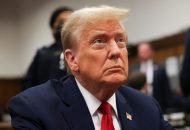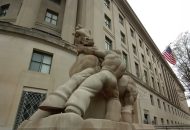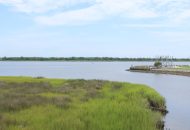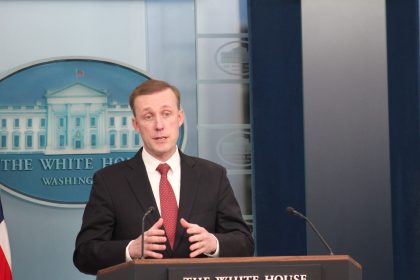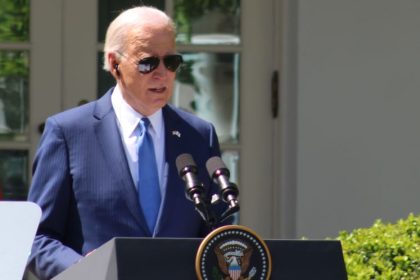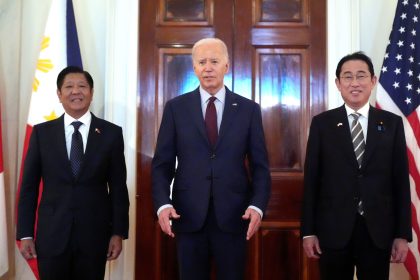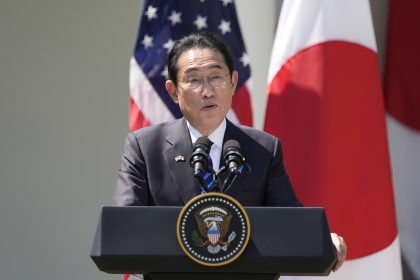New Book Offers Unique Look at Our Presidents and the Wines They Drank

WASHINGTON – There has probably never been a comprehensive tome on the American presidency quite like this one.
Entitled “Wine and the White House: A History” and coming in at 456 pages, this new, elegant offering from the White House Historical Association is a tour de force, not only exploring each president’s personal history with wine — with a few abstemious exceptions — but the long history of hospitality at the White House.
Author Frederick J. Ryan, Jr., knows his topic well. In addition to being a lifelong wine enthusiast, he was assistant to the president under President Ronald Reagan – a wine aficionado himself — and now serves as chairman of the board of the White House Historical Association.
Ryan was also the founding CEO for Politico and is currently publisher and CEO of the Washington Post.
The book begins with a reflection of a far humbler time in Ryan’s life, his undergraduate years at the University of Southern California. It was then he sought to impress a young woman on their first date by taking her to the Brown Derby in Hollywood.
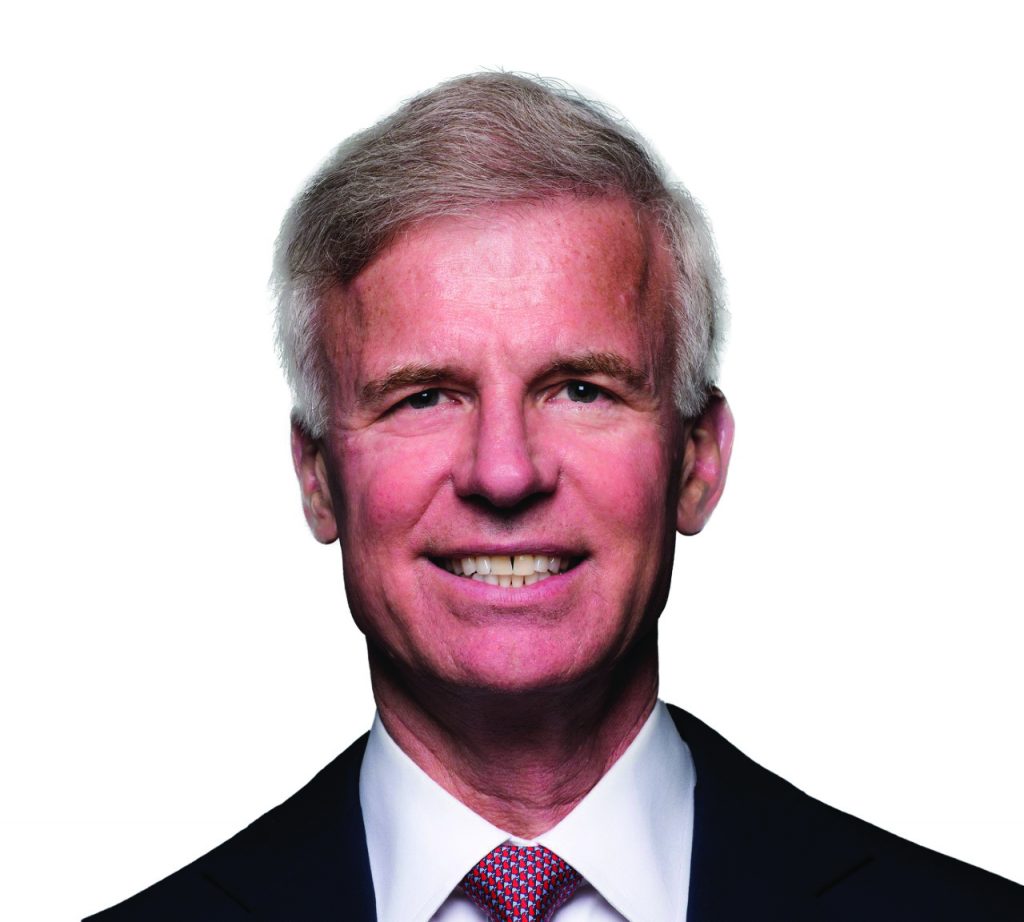
After ordering the Prime Rib with confidence, Ryan recalls, he found himself in deep trouble when the sommelier came by the table.
“Almost all the items on the extensive list of Bordeaux treasures were unpronounceable at the time,” he writes. “I latched onto the Chateau d’Arche, confident I could at least manage to say that name without stumbling.”
The sommelier politely urged Ryan to reconsider, offering several other recommendations, but the young man was determined to hold firm, for appearances sake.
The extent of Ryan’s error was revealed when the sommelier returned and opened a bottle of chilled sweet wine — ideal for dessert, but a disaster with any kind of beef.
“My date was not impressed, and the relationship went no further,” Ryan writes. “It was clear that I needed to begin taking wine more seriously.”
Decades later, the author takes pains to write for a diverse audience, creating a book sure to please everyone from the reader interested in wine and wanting to simply learn the basics, to history lovers in search of new and interesting facts about the people who have occupied the most famous address in the United States.
After a brief discussion of his own experiences with wine and what drew him to this project, Ryan opens with series a wine-driven profiles of each president, follows with an in-depth examination of the White House collection of wine glasses and other paraphernalia, and concludes with individual profiles of the wine regions and vintage producers whose wares have found their way to the president’s table.
Informative and entertaining, the fully illustrated pages of Wine and the White House also feature memorable presidential toasts, menus from historic White House gatherings, and a complete catalog of vintages served.
Through these topics, Ryan captures how the wine attitudes of the presidents and the country have evolved over the decades.
Thomas Jefferson was the first to hold lavish dinner parties at the White House, events that included multiple courses of food and wine.
Though his passion for wine began long before he entered the White House, Jefferson well understood wine’s ability to oil social interaction by putting guests at ease and breaking down barriers.
He was also responsible for the creation of the first wine cellar at the White House.
After Jefferson, most early presidents recognized the important function wine played in entertaining at the White House.
While some appreciated and enjoyed wine, others considered it merely an aspect of the ceremonial part of their job. Still others wouldn’t have it in the White House at all, while those that succeeded them celebrated its return with gusto.
But more than overarching attitudes about wine — pro or con — have changed over the years.
Back in Eisenhower’s day, for instance, wine considered worthy of being served at a diplomatic event would have come to the White House from Europe. A typical state dinner in the 1950s might have started with an offering from Spain, and then for the rest of the evening, been followed almost exclusively with French wines.
More recently, however, presidents have taken pains to use the White House as a venue for showcasing the finest wines in the nation.
Though menus dating from the early 1960s show John and Jackie Kennedy mostly adhering to the practices of the past, the documents also reveal the growing presence of American wines, including Almaden, Inglenook, and even Lancer’s Rose.
LBJ served American wines exclusively, and Reagan was particularly fond of touting California vintages, reshaping the American taste for wine in the process.
Of course, one can’t talk presidents and wine, without coming across a few shenanigans.
One can only imagine how President Woodrow Wilson, a lover of champagne and fine wines, felt when Congress overrode his veto of the Volstead Act, ushering in the age of Prohibition.
He skirted the law by getting special permission to move his White House wine collection to his post presidential residence.
Richard Nixon, too, allegedly gave himself preferential presidential treatment, with two-tier wine service.
A fan of first-growth Bordeaux, Nixon was said to have a designated waiter pour his favorite, 1966 Château Margaux, while his guests unknowingly received more democratic wines.
So widespread was the rumor that the practice even got a name: “pulling a Nixon.”
In the interview that follows, Ryan offers a tantalizing glimpse into all this and more.
You begin this book by describing how your own personal love of wine began and your association with it in the White House. I wonder if you could talk a bit about actually undertaking this book … starting, perhaps, with where you looked for information.
It is true that this book brings together two of my longtime personal passions. Since my days as a political science major in college, I’ve been fascinated by the unique role of the American president and the history of the White House.
My decades-long interest in wine began when I was a student at the University of Southern California and would explore the Napa Valley wine region whenever traveling north for USC football games. This was useful preparation, as it happens, for my early career, which was rooted in my other passion: the American presidency.
In 1982, I found myself working in the White House of President Ronald Reagan, one of the most sophisticated and engaged presidents when it came to the subject of wine. I remained interested in wine well after the White House, and in 2008, my enthusiasm and curiosity led me to enter the world of winemaking myself. Peggy Ryan—a very talented, and unrelated, Napa Valley winemaker—and I formed a joint venture called, appropriately, Ryan Cellars.
The overlap of my interests in wine and in White House history, suggested to me that there might be interest in a comprehensive history on the two subjects. Books have been published on many aspects of life in the White House, including music, art, food, and entertaining, but never a volume completely devoted to wine.
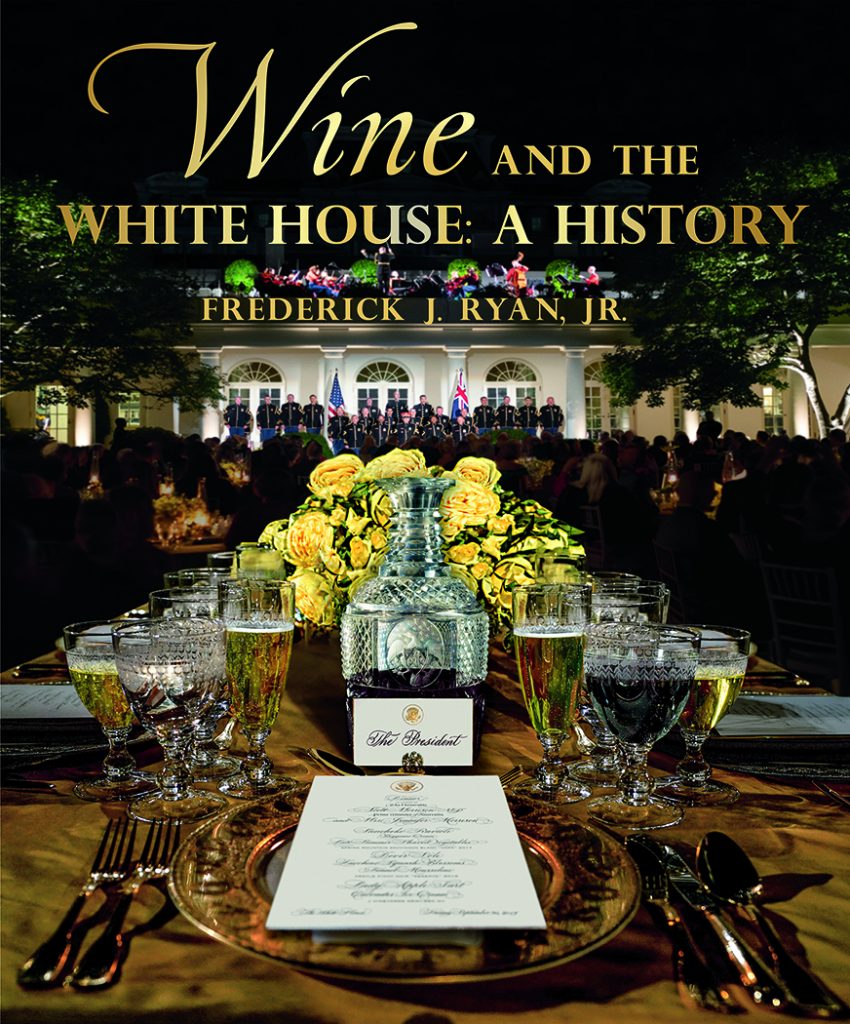
As the idea for the book became a reality, I began with such primary sources as historic state dinner menus, as well as published sources, including the writings of Thomas Jefferson, one of our most knowledgeable presidents on the subject. Equally important to compiling the book was talking with many winemakers whose wines have been served at the White House and collecting the memories of those who have been a part of the process of selecting and serving those wines.
Did you work exclusively with the White House Historical Association? Or did you have to reach out to the National Archives, various historical sites or even vineyards themselves for records?
As the publisher of the book, the White House Historical Association facilitated my research and managed the editorial, design, and production of the book. The text and illustrations are drawn from the holdings of presidential libraries, the National Archives, and the Library of Congress, as well as vineyards and dozens of other privately held collections.
The book also includes new photography of the historic glassware and serving pieces in the White House Collection. Many private collectors of rare wine books generously made their libraries available to me as I researched this book.
This comprehensive history of wine in the White House could not have been written without the first person recollections of the men and women who lived and worked there. First Lady Melania Trump, former First Lady Michelle Obama, and seven former social secretaries from four administrations shared their memories, revealing the care with which White House wine service is planned.
And Daniel Shanks, the first person to ever serve in the Executive Mansion as food and beverage usher, provided unique insights into social life in the White House.
What was the hardest information to find?
While extensive material is easily accessible on the wine interests of some presidents — Jefferson, Nixon, and Reagan for example — less has been published on the drinking habits of many others, but a deep dive into archived documents, diaries, and period illustrations yielded interesting stories from every presidency.
Determining whether many familiar and often repeated stories were apocryphal or true was also difficult at times.
A good example is the story of a two-tier wine service in the Nixon White House—the practice known as “pulling a Nixon” in which Nixon’s designated wine waiter poured a fine selection into the president’s glass while other guests at dinner were served more ordinary wines. As I looked into this I found that the story had been denied by former Nixon White House employees but I finally found confirmation by Washington Post investigative reporters Bob Woodward and Carl Bernstein.
In addition to exposing Nixon’s misdeeds related to the Watergate break-in, they also revealed in their book “The Final Days” that, on the presidential yacht, Nixon served inexpensive French Bordeaux wines to the congressmen he was entertaining while instructing the stewards to secretly fill his own glass from a pricey bottle of his favorite 1966 Château Margaux. The bottle was wrapped in a towel to obscure the label.
And on a related note, what was the most surprising piece of information you found out?
Although I knew that wine was a very important feature of White House hospitality for most presidents, I was surprised by the extent to which many nineteenth-century presidents invested their White House budgets in wine.
President Jefferson spent an average of $3,200 annually ($70,124 in 2020 dollars) on wines served to his guests. While First Lady Sarah Polk refused to serve hard liquor at the White House, she compensated by stocking the cellar with even more wine and champagne than had previous administrations, making wine one of the largest expenses during the Polk years.
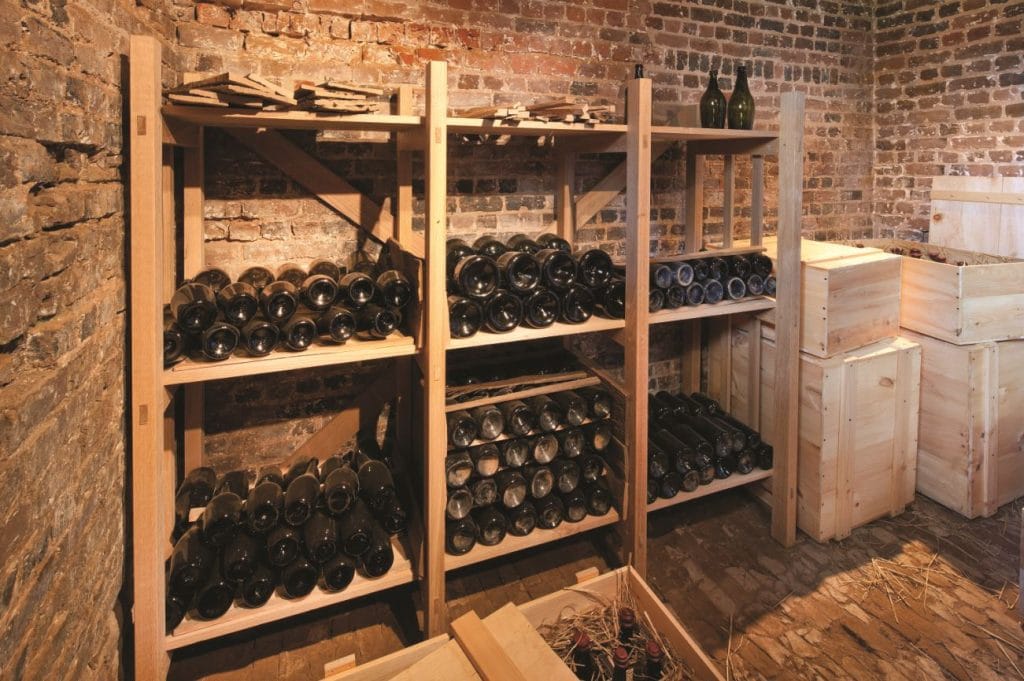
One diarist recalled a dinner at which “pink champagne, gold sherry, green hock, Madeira, the ruby port & sauterne formed a rainbow round each plate.” President Buchanan spent $3,000 ($88,410 in 2020 dollars) on wine for his Inaugural Ball alone.
In the years following the Civil War, the dinners hosted by President Ulysses S. Grant were particularly lavish; each place was set with six wine glasses in anticipation of at least that many different wines being served with the sequence of courses.
The wine bill for one lavish dinner came to $35,230 in 2020 dollars. Towards the end of the nineteenth century, the Grover Cleveland administration was described as a time “when wine flowed freely,” with four to six glasses surrounding each plate at large dinners and a different wine for each course and champagne all through the meal.
I was also rather surprised to learn that although Prohibition had taken effect during his presidency, Woodrow Wilson obtained special permission from the Prohibition Commissioner to move the substantial wine collection he had accumulated while in the White House to his private home to enjoy after he left office.
The permission was needed because, under the Volstead Act, transporting alcohol was a crime. Many dusty bottles from his collection remain in the cellar of the Woodrow Wilson House today, and the staff was kind enough to take a special photograph of the collection for us to publish in the book.
OK, a simple question of logistics, where is the wine cellar within the White House complex? Who maintains it today? And who directs what will be stocked in it (given that the current occupant of the White House, Donald Trump, is not a wine drinker?)
The current White House wine cellar is actually more a closet than a cellar. It is located just off the White House kitchen and is maintained by the Usher’s Office.
With storage space for about 300 bottles of wine, the room is surprisingly small, especially when compared with the cellars of other heads of state. The cellar beneath Élysée Palace in France holds 14,000 bottles, while England’s Government Wine Cellar in Lancaster House holds an estimated 38,000 bottles for Buckingham Palace and other royal residences.
The space in the White House is not used to age and store large quantities of wine, but rather as a resting place for bottles purchased for specific events at the White House until they are served.
I was surprised by your descriptions of Ronald Reagan. I have to admit, I associate him more with jelly beans than wine. Could you comment on his deep affection for wine and how he felt about the public following his lead and embracing California vintages?
President Reagan understood the importance of wine in entertaining and diplomacy, especially during the 1980s, as wine was rapidly growing in popularity in the United States.
During his years as governor of California, he had established close relationships with California winemakers and stayed in touch with them. Once they were in the White House, the Reagans enthusiastically promoted a variety of winemakers from their home state.
With the exceptions of Schramsberg sparkling wine as the standard for dessert and Jordan and Robert Mondavi as favored vineyards, the Reagans did not serve wine from the same vineyard more than three times. In fact, the wines served during Reagan’s two terms were the most diverse of any recent administration. It was at Reagan state dinners, for example, that both California Zinfandel and Merlot wines were first served at the White House.
Yet for all their knowledge, the Reagans still encountered such wine-service dilemmas as what to do when the guest of honor at a state visit is the leader of a major wine-producing country. When French Prime Minister Jacques Chirac visited on March 31, 1987, he and Reagan had by that time known each other for several years, and both shared an interest in promoting the wines of their respective countries.
A brilliant diplomatic decision was made when Reagan chose as the centerpiece of the evening wine service 1982 Opus One—a joint venture between Baron Philippe de Rothschild, the innovative leader of France’s Château Mouton Rothschild, and Robert Mondavi, the California wine visionary.
President Reagan was proud of California’s wine industry. He knew that the White House was the perfect stage on which to present these wines to the greater public, especially those in Washington far from the vineyards of the west coast. He succeeded in bringing these wines to the forefront of the American wine market.
It sounds as if, in some ways, President Reagan, of all the presidents, had the most direct influence on what America’s wine drinkers choose to drink today …
No, there were other influential presidents as well, most notably Thomas Jefferson. While serving as Emissary to Paris, Jefferson traveled the famous wine regions of France, Italy, and Germany. He kept copious notes about the wines he tasted and when he returned to the United States he continued to order wines from his favorite vineyards in these countries.
Jefferson introduced many to the Italian wine Montepulciano at his White House dinners and commented in a letter that this previously unknown wine was very popular amongst his dinner guests. Jefferson also served as a wine advisor to his fellow presidents and friends. His knowledge of the best wines was well-known and he would receive letters from associates asking him to recommend vintages.
More than 150 years later, President Lyndon Johnson was the first president to prominently feature American wines in the White House. Johnson wanted to promote the growing American wine market and give it a sense of legitimacy. If a domestic wine was good enough for the president and the White House, it could be served at any American table.
Even for a dinner hosted by the President’s Club of New York, at the Waldorf Astoria Hotel, President Johnson requested that only American wines be served—a departure from the hotel’s usual French offerings. In 1969, Don W. McColly, president of the Wine Institute, stated, “No president has done more to further the interest of the American wine industry than President Johnson,” crediting him for the growing popularity of American wines.
How have independent winemakers fared, in terms of having their bottles added to the White House wine cellar?
An entire chapter of the book is devoted to listing the wines served at state dinners and official events from Eisenhower to the present. This catalog of vintages lists almost 200 vineyards and includes wines from nearly two dozen U.S. states. Many of these vineyards assisted with the book by sharing photographs for our catalog of wines served.
The number of vineyards from which wine has been purchased really started to grow in the 1960s, when wines from California appeared on White House menus. Over the last forty years, the number of independent winemakers providing wine to the White House has expanded considerably.
President Reagan rarely served wine from a single vineyard twice. Daniel Shanks, the first White House staff member in charge of wine selection and service, continued this approach after he came to the White House during the Clinton administration. Shanks sought out new vineyards so White House guests could experience wines they may never have had before, adding another special aspect to dining at the White House. After state dinners when the wine names are released to the public, these vineyards often saw an increased interest in their wines.
I think the average person probably associates the drinking of wine at the White House with ceremonial affairs or diplomacy. Are there instances where it has played a meaningful role in domestic politics?
Formal dinners and luncheons at the White House are usually diplomatic events, opportunities to welcome world leaders by showcasing American hospitality at its best. Other official dinners honor the achievements of Americans, such as Nobel Prize winners and Olympic athletes, or those in high office, such as the governors of the states and the justices of the Supreme Court. The wines for these events are carefully chosen, often making a connection to a guest’s homeland or home state. A good example is the president’s annual dinner in honor of governors, for which wines from across the country are traditionally selected. President George W. Bush, for example, served wines from Arizona, North Carolina, and Missouri at his governors’ dinners.
This may be a gross exaggeration, but I tend to think of wine as a White House beverage and the Capitol, perhaps, more a venue for hard liquor. In your studies of wine at the White House, did you learn anything about the wine culture at the Capitol, or even, perhaps, the Supreme Court?
The White House is both the home and office of the president while the Capitol and Supreme Court function only as working spaces. However, the Capitol is the location of the inaugural luncheon, a tradition dating back to 1897 when a luncheon was given there in honor of President William McKinley.
The luncheon in its current form, as hosted by the Joint Congressional Committee on Inaugural Ceremonies, began in 1953 with President Eisenhower. The Committee hosts the president, vice president and their spouses, Senate leaders, Committee members and other invited guests. They typically select cuisine and wines that reflect the home states of the president and vice president. Korbel Special Inaugural Cuvée has actually been served at all the inaugural luncheons since President Reagan’s second inauguration in 1985.
Does a “wine culture” exist in Washington, D.C. today, and if so, what are some of its manifestations?
As in many cities, in Washington wine plays a large role in official and private entertaining. But Washington has a wine culture of its own, especially as the many embassies in the city put great effort into presenting the best wines from their countries. There are many wine clubs across the city. I have actually expanded my wine knowledge through my involvement with the Wine Committee at the Metropolitan Club.
Wine lovers in Washington, D.C., are also within a few hours’ drive from more than 100 wineries in nearby Virginia. These wineries draw people out of the city for tours and tastings each weekend, including at least one first lady.
Do you think a change in administrations will fundamentally change the “wine culture” of the city?
Because the wine culture of Washington is so integral to entertaining and socializing, it has remained largely the same for decades and has not fluctuated much with changes in administration. Exchanges of toasts have long been a central part of diplomatic events and are likely to remain so.
Finally, we all read books like this to get tips. What can we learn from the White House about the pairing and serving and presenting of wine in our homes (especially this time of year, with the holidays upon us)?
One of the hallmarks of wine service at the White House is the way in which each wine is carefully selected to compliment not only the menu, but the guests and the season. We devote a full chapter of the book to reproducing dinner menus—more than one hundred spanning more than one hundred years. The menus offer a wealth of interesting insights into how wine has been paired with food over the years. This collection could certainly serve to inspire a reader trying to replicate something special as they select wines to serve at their own celebrations over the holidays.
I don’t think you mention in the book, though I may have missed it, if you have a favorite wine? And do you have recommendations for the best places to buy wine in DC?
When I had the honor of working for President Ronald Reagan, he would often celebrate special occasions with a unique bottle of wine. He surprised me on my birthday with a bottle of Château Mouton Rothschild 1955 – the year of my birth. He personally signed it with birthday greetings. It’s hard for me to imagine a more special bottle of wine. I’m still waiting for the right occasion to drink it!
The last chapter of the book contains a full listing of wines served at state dinners from the Eisenhower administration to the present. Readers will find a range of wines from famous regions in France to small vineyards in California. I hope they will be inspired to try the wines listed, and most can be ordered through any wine shop in DC.
For more of Frederick Ryan on wine and the White House, listen to the White House Historical Association’s podcast The 1600 Sessions here.









